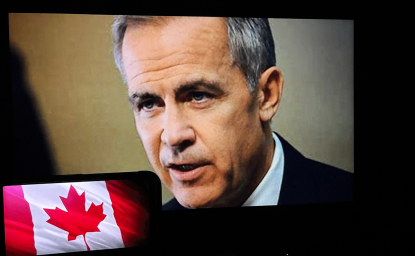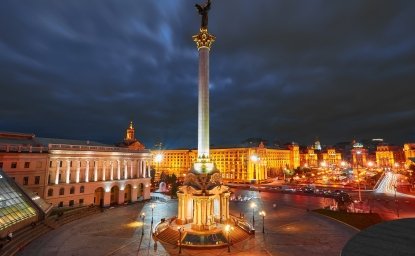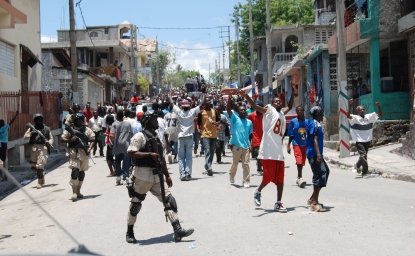330. Serbia's Elections of January 21, 2007: More Pluses than Minuses

John R. Lampe is Professor of History at the University of Maryland and Senior Scholar at the Wilson Center. He spoke at an EES Noon Discussion on February 15, 2007. The following is a summary of his presentation. Meeting Report 330.
These comments draw on my visit to Belgrade this past January, initially arranged as a research trip for my ongoing and optimistically titled book project with Lenard Cohen, "Embracing Democracy in the Western Balkans: From Post-Conflict Struggles to European Integration." The visit's overlapping with January 21 meant that the elections dominated most of my conversations and also the current press that I collected. I met with a variety of scholars, the editors of the daily Danas, for which I provided an interview, Slobodan G. Markovic of the Institute for European Studies, Srdjan Gligorijevic of the International and Security Affairs Center, and Sonja Licht, now President of the Belgrade Fund for Political Excellence. Supplementing their varied impressions for this balance sheet are articles from the daily papers Danas and Politika, and the weekly magazines Vreme and NIN.
Encouraging me more than the election results were some of the unrelated publications swimming against the tide of special Serbian victimization—still too prominent in the Belgrade bookstores. Two books in Serbian by young scholars caught my eye. Vladimir Ribic draws on the full range of Western theorizing about nationalism to analyze Serbia as a "Divided Nation" in the 1990s, while Ivana Dobrivojevic details "State Repression" during King Aleksandar's Serbian-dominated dictatorship of Yugoslavia during the early 1930s. In English, I found "Problems of Identities in the Balkans," an impressive set of essays by young scholars edited by Slobodan Markovic et al, and the fully detailed "Media and Minorities in Southeast Europe," edited by Thomas Bauer and Oliver Vujovic for the South East Europe Media Organization, whose board is chaired by Radomir Licina of Danas.
But I also came away with some encouragement from the election's rather unsurprising results. They contained more positive features than the negative ones fastened onto by the initial Western reporting of the results. Neil McDonald of the Financial Times called it "a victory for the nationalist hardliners," as did the initial CNN bulletins. One announcer blundered into identifying these Serbian Radicals, leading with 28.7 percent of the vote, as "Slobodan Milosevic's old party." In fact, his Socialist Party of Serbia received only 5.9 percent of the vote, barely over the 5 percent threshold and headed by a candidate who did not mention his name once during the campaign. This prompted my Danas interviewer to express her pleasure at voting in what she called the first "Milosevic-free" election in memory.
There were a number of other pluses. Let me cheer us up by listing them before turning to some undeniable political and economic minuses:
— The campaigning was less vituperative and less demagogic than earlier elections. The Belgrade Times of January 18 called the campaign "long and boring." The upbeat, American-style party slogans, sometimes coming from actual American consultants (even for the Radicals), helped to avoid negative campaigning, as well as avoiding specific programs for addressing economic dilemmas. Both the Radicals' criticism of a female minister as "an Ustasa" for having been born in Croatia and the New Year's Eve vulgarities of Ceca and Riblja Chorba with DDS Prime Minister Vojislav Kostunica standing by seem to have cost the two parties votes.
— At 60.4 percent, the turnout was higher than expected (indeed, the turnout was closer to 70 percent if you subtract the dead and departed who have not yet been removed from eligible voter lists). This probably benefited the Democratic Party, whose voters had been dubbed the most discouraged and thus most likely to stay home.
— The balloting has been accepted by the public as having been fairly conducted and the results are not contested by any of the parties. The suspicions surrounding late balloting in the recent referendum on the Serbian constitution did not reappear. International observer and former Wilson Center Fellow Geert-Hinrich Ahrens congratulated Serbia on an exemplary set of procedures during the election.
— The number of women elected to the 240-member Skupstina (Parliament) nearly doubled since the 2004 elections, rising from 30 to 58-60.
— The ethnic minority parties are now represented for the first time, with three Hungarian, two Bosnian and two Roma representatives (a Presevo Albanian representative's election is being challenged by another Albanian group)
— The Liberal Democratic Party, despite its recent formation, passed the threshold by winning 5.3 percent of the vote. Its young leader, Ceda Jovanovic, was the only candidate to accept openly the possibility and perhaps necessity of Kosovo's separation from Serbian sovereignty.
— President Boris Tadic's Democratic Party (DS) recorded the largest advance since the last election of any party, climbing to 22.9 percent of the vote. Its share held steady at more than 20 percent throughout Serbia, except for Kosovo where it dropped to 10.5 percent. Drawing on shares of more than 30 percent in the area bordering with Croatia and the refugee-heavy areas in the Vojvodina, the Serbian Radical Party gained barely a single percentage point from that last election and actually lost one seat in the assembly, falling from 82 to 81. The Radicals overall share of the Vojvodina vote actually slipped from the last election as well, down to 28.2 percent with the Democrats rising to 24.5 percent. (Alas, in Belgrade, thanks to the outlying areas, the Radical share rose past the Democrats' percentage).
— Combine the Democrat's 65 seats with the 47 won by Prime Minister Kostunica's Democratic Party of Serbia coalition (DSS/NS) (concentrated in Sumadija and boosted by the Ilic alliance with New Serbia) and the total approaches a majority of the 240 seats. Add the 19 won by the slipping G-17 Plus and the 15 for the Liberal Democrats, and you have the "pro-European majority" of 146 seats celebrated by the Danas headline of January 22. And no one expects Kostunica to abandon his pledge not to form a government with the Radicals, their only possible way to power (even if they wanted it before a decision on Kosovo is reached).
So much for the not inconsiderable good news. On the minus side, several worrisome points need to be made, and they are worrisome enough to give us some pause over the initially optimistic headline in Danas of January 22, "Victory for Pro-European Serbia."
— As aptly noted by the Politika headline of January 22, "there will be no government without agreement between the DS and the DSS/NS." And, as Danas added the next day, the division of ministerial positions is "the greatest barrier to an agreement." The initial prospect seemed to leave Prime Minister Kostunica in place in return for major ministries for the Democrats, including Justice and Interior as well as the Foreign Ministry. But the elections clearly failed to resolve the divisions between the two parties that have left Serbia with a divided government for the post-Milosevic years. Recent statements from both sides have not been suggesting an easy resolution, starting with the decision over who will be the prime minister. In its pre-election edition, the weekly NIN aptly headlined the "battle for the Premiership" as the major issue in "who is Serbia for." The most recent news, from February 13, raises instead the prospect of Kostunica agreeing to accept the Democrats' Bozhidar Djelic as Prime Minister, perhaps now a less attractive position given the impending loss of Kosovo.
— While both the DS and the DSS appear ready to include G-17 in the coalition, the latter has balked at accepting the Liberal Democrats, given their position on accepting the loss of Kosovo. This calls attention to the failure of all the other parties, and not just the DDS, to address the necessary Plan B when Kosovo is separated, under terms unclear at this writing, from formal Serbian sovereignty. I found too little support in my conversations for the notion, recently seconded by former US Ambassador William Montgomery in a newspaper column, that the conditions limiting independence and thus favoring the position of the Kosovo Serbs might be substantially advanced by hard bargaining by Serbia, rather than the present position of no bargaining over sovereignty, newly reinforced by the DSS reference to the territorial stipulations of the new constitution and the threat to break diplomatic relations with any government that recognizes an independent Kosovo. Wider fears of a Radical victory in the next election remain if sovereignty is surrendered under any terms. Hence the danger of delaying the formation of a new government to stall off a Kosovo settlement, less dangerous if it prompts another anti-Serb Kosovar explosion as in March 2004, and more dangerous for Belgrade if it forfeits the obvious EU interest in offering Serbia the start of negotiations for a Stability and Association Agreement, perhaps in advance of apprehending General Ratko Mladic.
— The other major lacunae in all party campaigns was what a Belgrade Times headline on January 18 called "the code of silence on corruption." Serious deformities still reach deeply into the judicial system, law enforcement and also into the stalled process of privatization. Too many important enterprises, while formally privatized, remain under presumed state supervision but are in fact "rented" to dubious operators under unspecified conditions, while their transfer to the original owners awaits adjudicated determination. The renters' ostentatious wealth plus that of other "millionaires," all presumed, fairly or unfairly, to have started with corrupt connections during the Milosevic regime, supports the shops in Belgrade whose wares no one else can afford. Their fashionable appearance is flaunted in cafes and the popular press. Here is the primary reason, rather than the issue of Kosovo, for the rise of Radical votes in Belgrade and the decline for the Democrats, particularly among the huge number of hard-pressed pensioners. The Radicals struck a receptive chord with their promises to pay for restored pensions, improved health care and new public employment by taxing or confiscating the presumably ill-gotten wealth of the "millionaires."
— Add inflation in double digits and the general public's continuing suspicion of privatization and foreign ownership to the existing problems of health care and pension reform, and the promising macro-economic indicators for 2006, led by a 6 percent increase in GDP, do not look so promising. As in the rest of the Western Balkans, addressing these economic issues is the major priority facing all their governments. Serbia's elections do not, however, suggest that the same recognition of that priority exists in Belgrade as I have recently found in other capitals in the region.
— Finally, as an historian of both Yugoslavias and the Serbian state that came before, let me note that Serbia's elections suggest that the multi-party divisions of the 1920s, which tried to reemerge after the Second World War until the Communists suppressed them (as described in Vojislav Kostunica's co-authored and courageous book of 1983) seem to be a special feature of Serbia's political culture. No dominant party has emerged to win a clear majority, then or now. It is a democratic tradition, rather than the authoritarian one often linked to a presumed Russian connection with which too much "instant history" still identifies Serbian politics. But it is also a tradition that helps us to understand the unhelpful stalemate with which today's really existing Serbia struggles even after these most recent elections. I may thus conclude where I started, citing the still appropriate title of the young Serbian scholar's book on the 1990s, that Serbia is Podeljena nacija—a Divided Nation.
Author

Professor Emeritus, Department of History, University of Maryland, College Park

Global Europe Program
The Global Europe Program is focused on Europe’s capabilities, and how it engages on critical global issues. We investigate European approaches to critical global issues. We examine Europe’s relations with Russia and Eurasia, China and the Indo-Pacific, the Middle East and Africa. Our initiatives include “Ukraine in Europe”—an examination of what it will take to make Ukraine’s European future a reality. But we also examine the role of NATO, the European Union and the OSCE, Europe’s energy security, transatlantic trade disputes, and challenges to democracy. The Global Europe Program’s staff, scholars-in-residence, and Global Fellows participate in seminars, policy study groups, and international conferences to provide analytical recommendations to policy makers and the media. Read more

Explore More
Browse Insights & Analysis
Mark Carney to Lead Canada Amid Rising Trade Tensions With US




